Living in Kyoto: A Detailed Guide to Life in Kyoto
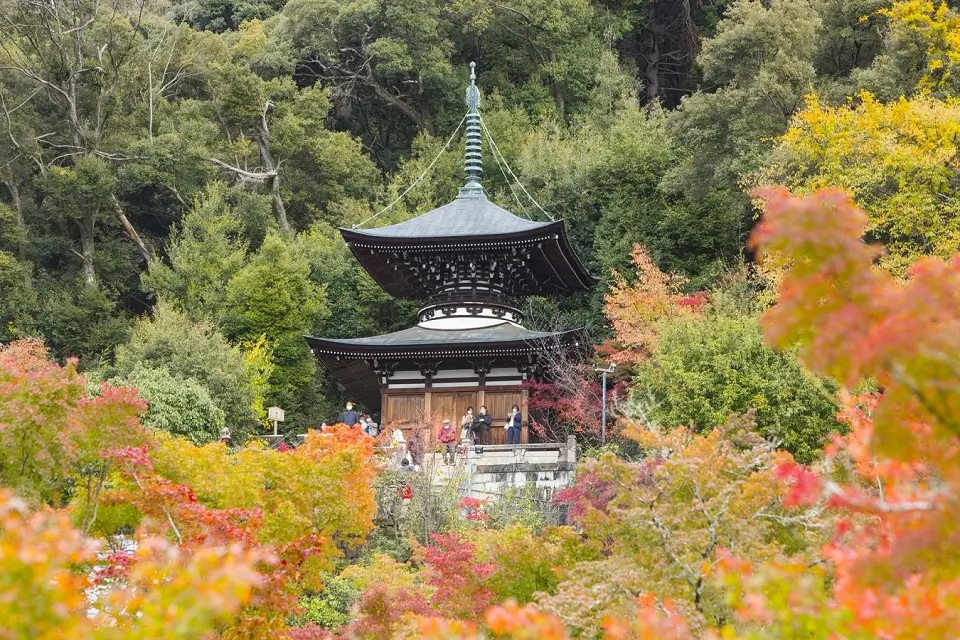
The old capital city of Kyoto is famous as a center of history and traditional Japanese culture. It draws many tourists from all over the world, who marvel at the ancient temples, experience the tranquil gardens, and explore the scenic districts.
Kyoto Prefecture is more refined and undoubtedly slower-paced than Tokyo or even Osaka. Therefore, its unique lifestyle makes Kyoto a refreshing experience.
Location
Kyoto Prefecture, or Kyoto-fu (京都府), is located in western Japan on Honshu Island. Easy access from various important locations makes Kyoto a convenient location for people with business or tourism interests. Following are the travel times to Tokyo from some of the key locations of Japan:
- Shin-Osaka station in Osaka: 15 minutes by Shinkansen (bullet train)
- Osaka Station: 30 minutes by a rapid train
- Tokyo station: 2 hours 9 minutes by Shinkansen
- Hakata (Fukuoka): 2 hours 44 minutes by Shinkansen
- Hiroshima: 1 hour 37 minutes by Shinkansen
Brief History of Kyoto
Kyoto, once the capital of Japan, has a rich history that spans over a millennium. Founded in 794 A.D. as Heian-kyo, meaning “tranquility and peace capital.” Kyoto was the imperial capital for over a thousand years until 1868, when the capital moved to Tokyo.
During the Heian period (794-1185), Kyoto saw the flourishing of Japanese culture, with the development of court life, art, and literature. The Tale of Genji, considered the world’s first novel, was written by Murasaki Shikibu in this era. In 1185, the Kamakura shogunate came to power. This period ended the Heian period for the beginning of the feudal era. Kyoto remained Japan’s imperial capital and cultural center despite the power shift.
Kyoto was the stage for the turbulent Ōnin War (応仁の乱, Ōnin no Ran) (1467-1477). This war resulted in the city’s devastation and the beginning of the Sengoku period, a century of civil strife. Despite this, Kyoto’s prominence endured. This prominence of Kyoto was revitalized during the Azuchi-Momoyama period (1568-1603) under the leadership of warlords Oda Nobunaga and Toyotomi Hideyoshi.
During the Edo period (1603-1868), Kyoto maintained its cultural significance, even as the shogunate’s headquarters was in Edo (now Tokyo). Many of Kyoto’s iconic temples and gardens were established during this time, including Kinkaku-ji and Ryoan-ji.
Kyoto was spared from the bombings of World War II, preserving much of its ancient architecture and historical sites. Today, it is a thriving city with a population of over 1.5 million. Kyoto is also a UNESCO World Heritage Site featuring 17 locations that showcase its rich history, art, and architecture. As a symbol of traditional Japanese culture, Kyoto remains an important cultural preservation and tourism center.
Where to Live in Kyoto
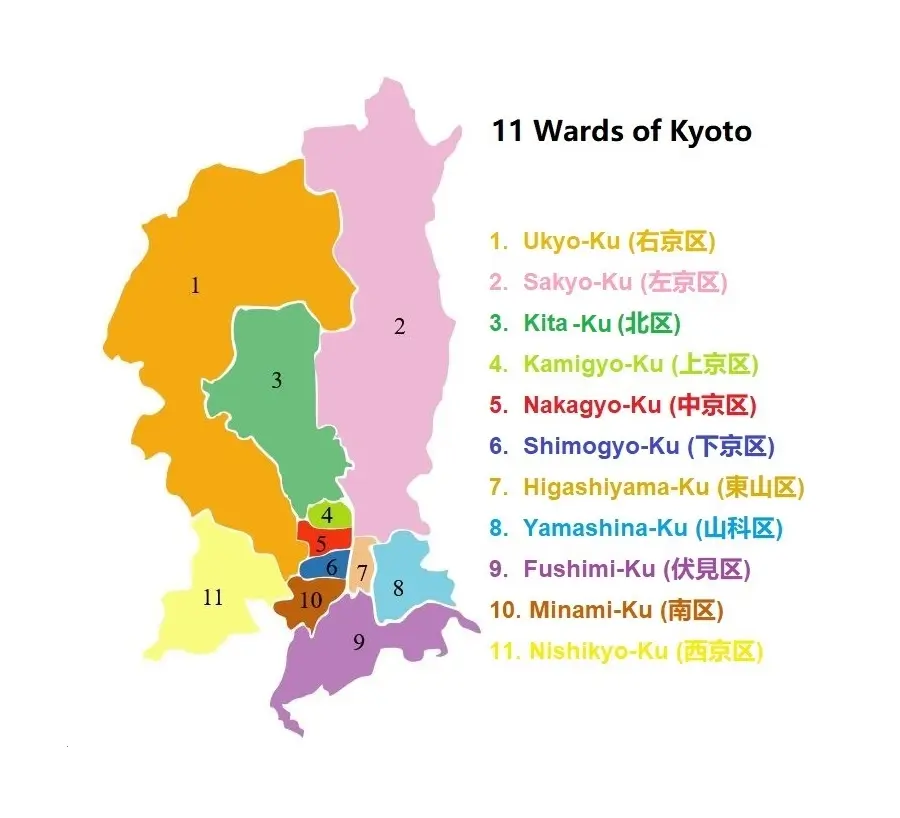
The most populous city in Kyoto Prefecture is Kyoto city. As the central tourism area within the prefecture, Kyoto city has the highest rent in Kyoto prefecture. However, there are many beautiful places in Kyoto prefecture where you can find accommodation at affordable rent. Moreover, you can lead a relaxing life outside work. Some of such places in Kyoto are as follows:
Kita City
Kita City, also known as Kita-ku, is one of the eleven wards in Kyoto. Located in northern Kyoto, Kita City is a predominantly residential area with a mix of traditional and modern architecture. It covers an area of about 60.66 square kilometers and has a population of approximately 140,000 people.
In particular, the Kitayama neighborhood is famous for its urban and sophisticated atmosphere, similar to the upscale residential area Shoto in Shibuya. Moreover, Kitayama is only a 15-minute train ride to Kyoto City, making it a perfect place to live.
Kita City is home to several important cultural and historical sites, including Kinkaku-ji, also known as the Golden Pavilion, and Ryoan-ji, a Zen temple famous for its rock garden.
Kinkaku-ji, a UNESCO World Heritage Site, is a must-visit destination in Kyoto. Originally built as a retirement villa for the shogun Ashikaga Yoshimitsu in the 14th century, it was later converted into a Zen temple. The top two floors of Kinkaku-ji are covered in gold leaf, creating a stunning reflection on the pond below.
Another prominent site in Kita City is Daitoku-ji, a large temple complex with several sub-temples, tea houses, and traditional gardens. Daitoku-ji is known for its association with tea master Sen no Rikyu and the development of the tea ceremony.
Kita City also offers natural beauty with its picturesque landscapes. These places include the Kamogawa River, which runs through the ward, and the surrounding mountains, such as Mount Hiei and Mount Kurama. These mountains are popular for hiking and offer spectacular views of the city.
In addition to its historical and cultural sites, Kita City has various shopping centers, restaurants, and entertainment venues, providing a blend of traditional and contemporary experiences for residents and visitors alike.
Nagaokakyo City
Nagaokakyo City is located in the southern part of Kyoto Prefecture. It is located between Kyoto and Osaka, has a population of around 80,000 people, and covers an area of approximately 34.22 square kilometers. Nagaokakyo City was established in 1972 when three towns—Nagaoka, Nishikyogoku, and Kyotanabe—merged to form the new city.
Nagaokakyo City holds historical significance, as it was the site of the imperial capital of Japan. It was known as Nagaoka-kyo, before the capital moved to Heian-kyo (present-day Kyoto). Nagaoka-kyo served as the capital for a decade, from 784 to 794. Therefore, you can still find the remnants of its ancient palaces and government offices within the city.
One of the notable historical sites in Nagaokakyo City is Nagaoka Tenmangu Shrine. This shrine is dedicated to Sugawara no Michizane, a revered scholar and poet. The shrine is famous for its beautiful plum trees, which bloom in late February and early March. The beauty of these blooming plum trees attracts many visitors during the annual plum blossom festival.
Mukogawa River, which runs through Nagaokakyo City, provides picturesque views and scenic spots for leisurely walks and picnics. The city also has several parks and recreational facilities, including Nishiyama Park and Yamada Nishiki no Sato, where visitors can enjoy seasonal flowers and local events.
Nagaokakyo City benefits from its strategic location between Kyoto and Osaka. It allows residents and visitors to experience Kyoto’s rich cultural heritage while enjoying the convenience and modernity of nearby Osaka. The city offers various shopping centers, restaurants, and entertainment options, making it an attractive destination for tourists and locals.
The city is magnificent in the fall when the red and yellow autumn leaves cover the Nakgaoka Tenmangu and Ao Komyoji Temple.
Fukuchiyama City
Fukuchiyama City is located on the Yura River in the northern part of Kyoto Prefecture. It covers an area of approximately 552.33 square kilometers and has a population of around 78,000 people. The city is in a basin surrounded by mountains and is intersected by the Yura River.
It’s a peaceful, relaxed city unbothered by Kyoto’s fast-paced lifestyle. The area is famous for its wine and silk production and delicious chestnut-based cakes.
Fukuchiyama City has a rich history dating back to the 12th century. Its most iconic historical site is Fukuchiyama Castle, originally built in 1579 by Akechi Mitsuhide, a prominent samurai and general under Oda Nobunaga. The castle’s reconstruction took place in the 1980s, and today, visitors can explore its grounds and enjoy panoramic views of the city from the castle’s keep.
Another notable site in Fukuchiyama City is the Goryo Shrine, which has a history of over 1,000 years. The shrine is dedicated to Emperor Go-Daigo and is known for the Goryo Festival, held annually in May. The festival features a parade with traditional costumes, portable shrines, and cultural performances.
Fukuchiyama City is also famous for its natural beauty, with the surrounding mountains and rivers offering opportunities for outdoor activities such as hiking, fishing, and camping. The nearby Oe Mountain Range is a popular destination for trekking and birdwatching.
In addition to its historical and natural attractions, Fukuchiyama City provides a range of modern amenities, including shopping centers, restaurants, and entertainment venues. The city has convenient transportation links, with Fukuchiyama Station as a hub for trains connecting to Kyoto, Osaka, and other major cities.
Fukuchiyama City offers a blend of historic charm, natural beauty, and modern conveniences, making it an appealing destination for visitors and residents alike.
Things to Do and Places to Visit in Kyoto
Kinkaku-Ji Golden Pavilion
Among Kyoto’s many World Heritage Sites, the Kinkaku-Ji, or Golden Pavilion, originally served as a retirement villa for Ashikaga Yoshimitsu. He was a shogun and a patron of the arts, so after he died in 1408, the Golden Pavilion was converted into a Zen temple. Aside from being stunning to look at, the golden exterior of the temple gives the impression of fire floating on the water.
Arashiyama Bamboo Grove
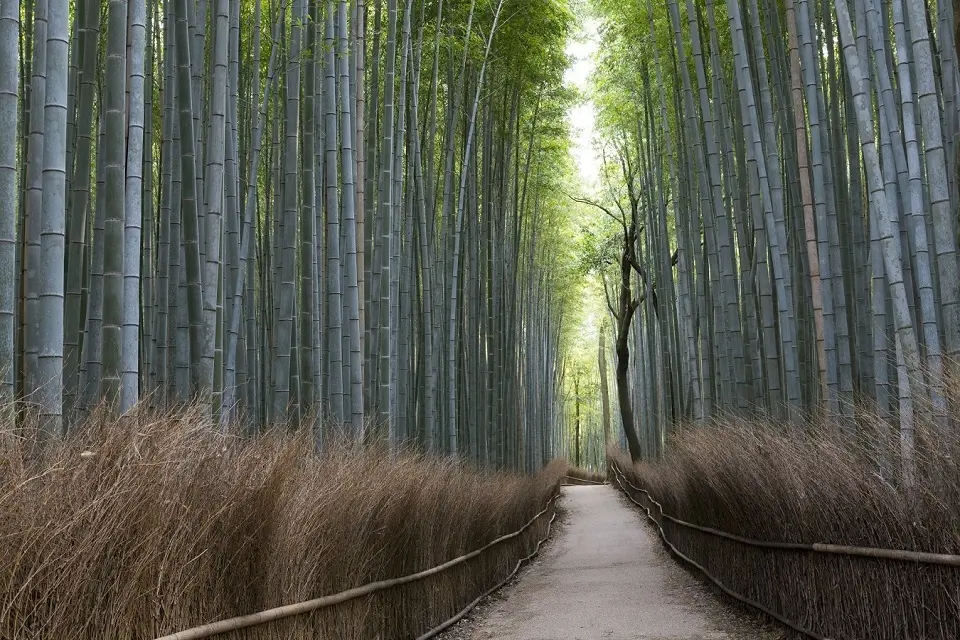
Hidden in the middle of Kyoto city, the bamboo grove offers a nice change from the city life. The path is 500 meters long and generously accommodates both pedestrians and bicyclists. Start from the Tenryu-Ji Temple and go to the forest’s far end at the Nonomiya Shrine.
Daimonji Festival
Once a year, in the middle of Obon season, the mountainside near the Silver Pavilion in Kyoto is set ablaze during the Daimonji festival.
For most of the night, you can see the fire raging for miles around, and viewers will notice that the fire spells a message in the Japanese Kanji for ‘great’ or ‘Big’ (大) and the way of Buddha myouhou (妙法). This marks the moment the ancestral spirits who visit Earth during Obon return to the spirit realm.
Arashiyama Monkey Park
Arashiyama Monkey Park is just south of the Togetsukyo Bridge. The entrance to the park is a small shrine. It takes 20-30 minutes to hike up the mountain, watching monkeys run wild in the park. It boasts about 120 snow monkeys that live on the mountainside, and the lure of food keeps them for visitors to see.
Fushimi Inari
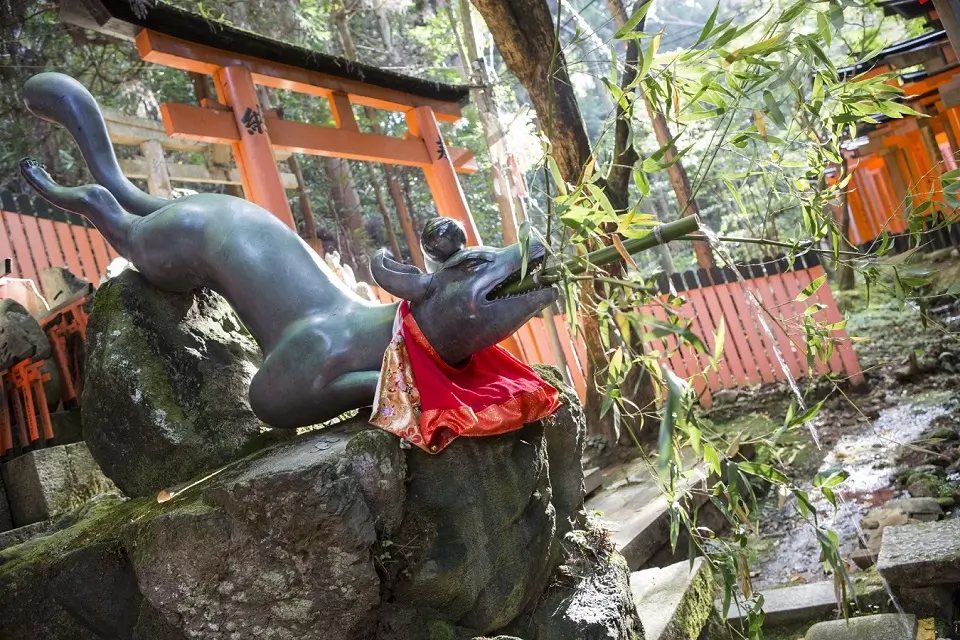
Fushimi Inari is ranked as Japan’s most popular sightseeing destination. Thousands of vermillion torii gates will keep visitors winding up and down the mountain all day. It’s the home of the Shinto god Inari, the god of rice and harvest.
The fox motifs around the shrine honor them since they were believed to be Inari’s messengers. Although the shrine is large, reaching the top will only take two hours, making it a great day trip for Kyoto residents.
Educational Facilities in Kyoto
Kyoto is home to several prestigious educational institutions known for their academic excellence, historical legacy, and cultural significance. Here are some brief highlights of a few notable educational institutes in Kyoto:
- Kyoto University: Founded in 1897, Kyoto University is one of the leading national universities in Japan. Its strong focus on research and academic freedom has produced numerous Nobel laureates and influential thinkers. The university offers a variety of undergraduate and graduate programs across various disciplines.
- Doshisha University: Established in 1875, Doshisha University is a private institution with a strong liberal arts focus. It is famous for emphasizing internationalization, offering several degree programs in English, and encouraging a global perspective among its students.
- Ritsumeikan University: Founded in 1869, Ritsumeikan University is a private university with a rich history and strong connections to Japanese culture. It is known for its interdisciplinary approach and offers international relations, policy science, and information technology programs.
- Kyoto Institute of Technology: Established in 1949, the Kyoto Institute of Technology is a public university specializing in engineering, architecture, and design. Focusing on practical learning and collaboration with industry partners, the institution has produced numerous innovators and designers.
- Kyoto Seika University: Founded in 1968, Kyoto Seika University is a private university with a strong emphasis on arts and design. Known for its manga, animation, and fine arts programs, the university fosters creativity and innovation among its students.
These are just a few examples of the many educational institutions in Kyoto that collectively contribute to the city’s reputation as a center of academic and cultural excellence in Japan.
Conclusion
Living in Kyoto is a refreshing experience for foreigners who wish to experience modern Japan while enjoying an air of old traditions, beautiful shrines and monuments, and Japanese culture.
Easy connectivity to some of the major cities, excellent educational institutes, and the friendliness for which the Kansai region is famous make living in Tokyo an ultimate experience.
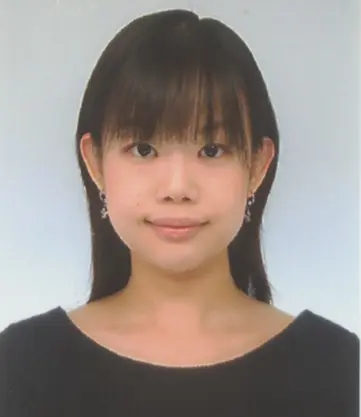
Based out of Tokyo, Izumi is a bilingual native Japanese, educated in Japan and Australia, and is an accomplished professional with progressive international experience of over 15 years with multinational companies in Japan, Australia, and India.
